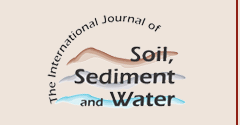Article Title
Construction of Biologically Productive Artificial Tidal Flats with Solidified Sea Bottom Sediments
Abstract
Ago Bay is a typical enclosed coastal sea that is connected to the Pacific Ocean via a very narrow and shallow entrance. The bay has been organically contaminated by the practice of culturing pearls, which has been ongoing for the past 110 years. To address this problem, a new technology — the Hi-Biah-System (HBS) —, which dewaters muddy dredged sediments and changes the muddy sediments for raw materials of tidal flat, was introduced in 2005. The solidified product from the sediments with the HBS was used to construct the tidal flat. The purpose of this study was to evaluate the environmental conditions of the constructed tidal flat 2 years after its construction. We monitored the physico-chemical (oxidation−reduction potential, acid volatile sulphide, loss on ignition, water content, total organic carbon, total nitrogen, chlorophyll a, and particle size) and biological characteristics of a constructed tidal flat (five sections) and a natural tidal flat (six points). At the same tidal level, the physico-chemical parameters were similar among the constructed and the natural tidal flats. However, the biomass and macrobenthic population were higher in the constructed flat compared to the natural one. According to the findings of this study it can be concluded that the solidified products from the sediments with the HBS could provide useful materials for constructing the tidal coastal environment.
Recommended Citation
Imai, Daizo; Kaneco, Satoshi; Dabwan, Ahmed H.A.; Katsumata, Hideyuki; Suzuki, Tohru; Kato, Tadaya; and Ohta, Kiyohisa
(2008)
"Construction of Biologically Productive Artificial Tidal Flats with Solidified Sea Bottom Sediments,"
International Journal of Soil, Sediment and Water: Vol. 1:
Iss.
2, Article 5.
Available at:
https://scholarworks.umass.edu/intljssw/vol1/iss2/5
